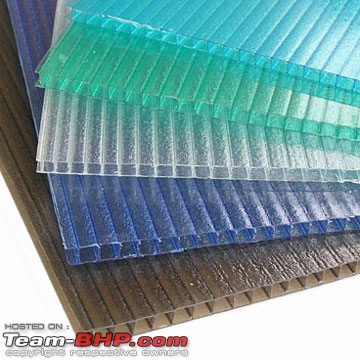Quote:
Originally Posted by Swanand Inamdar  Go on.. spread the knowledge. |
Quote:
Originally Posted by Guderian  Delightful indeed and will be having a good dekko at this thread in the days to come and chippin' in wherever I can. |
Quote:
Originally Posted by selfdrive  keep it going, I am all ears. I hope you have geared yourself up for some basic questions from me! I am delighted |
Thanks guys. As someone had said, knowledge is nothing if not shared and discussed. So please, let this be a two (or multi-) way dialogue.
Quote:
Originally Posted by Guna  Also, some of Plastic parts coming out of injection molding are pigmented (like the interior trims) and some are just gray and would go through painting (like the bumper) |
Thats right. Depending on the need fillers and colors are added. Interior parts do not normally need additional painting so the parts are molded with color. Bumpers would be painted according to car trim and color, so they need to be in some kind of neutral shade. Most bumpers are made from polypropylene/rubber blends these days. Their original color is typically opaque white. Grey/Black color comes from fillers which are needed to boost strength, increase adhesion to color and save on cost. We will talk about these aspects later.
Quote:
Originally Posted by SPIKE ARRESTOR  Once you are over with the basics, would like to know more about the latest trends in Automotive field w.r.t. materials science. Also how ELV and light weight designs are influencing product development. |
Wow, that would be nice. I could certainly comment on the choice of materials and process.
Quote:
Originally Posted by subodh  Product designers spend months over designing small components like door handle or a cup holder.
Once the design has been made in 3d softwares, it is sent to make the prototypes.
Once the prototype is ready, molds are made for these products to be manufactured on large scale. Making these molds is also a very costly affair and there are specialist people who are involved in this process. |
Thanks for sharing. Yes, designing any part is a very complex. I have also seen people working in CAD and turning, twisting and modifying a so called simple thing like a glove box cover for eons. And you also made an extremely important point of deciding which type of molding process that one should use from the cost perspective. I have a basic illustration below.
---------------------------------------------------------------
Now that we have seen how polymers are made, lets look at two classes of polymers that kind of decide their usage and fabrication process. The following diagram illustrates the two classes, thermoplastics and thermosets.

Thermoplastics can flow when heated beyond a particular temperature and can be recycled.
Thermosets, once set or cured, cannot flow; it simply softens beyond a particular temperature. They can be used only once.
These two classes have individual processing techniques according to their flow properties.
Typically thermoplastics are injection molded. Other techniques of making a part of thermoplastics are,
2. compression molding
3. thermo or vacuum forming
4. blow molding
5. rota molding.
Many times injection molding and compression molding can produce similar parts. If the parts are very complicated, like sharp corners, lots of ribs, injection molding is the preferred way. However, typically compression molding is easy to impliment, since, just as Subodh pointed out, mold making in injection molding is a very costly affair. So number of parts decides which technique to use. Following is a plot which points cost vs number of parts and which technique makes more sense at a particular regime.

Thermosets parts are made from many techniques, some popular ones being Reaction Injection Molding for PU and Vacuum bagging for epoxies. We will talk about thermoset fabrication techniques later.
Depending on material property, a material is chosen to make a desired part. Typically cycle times for thermoplastics are faster. So for parts that needs to be made in large numbers, thermoplastics are used. Looking at this point from a different angle shows that thermoplastic parts are relatively less expensive. Therefore where-ever possible thermoplastics are used.
Thermosets are chosen where their material properties dominates the decision of choice of materials. For example foams can be made from thermoplastics or thermosets, but for seats only PU is used due to a combination of superior properties like softness, compression set, longevity etc.
Next we will look at a few individual thermoplastic polymers and where they are used in cars.
 (28)
Thanks
(28)
Thanks
 (1)
Thanks
(1)
Thanks
 (10)
Thanks
(10)
Thanks
 (3)
Thanks
(3)
Thanks
 (9)
Thanks
(9)
Thanks

 (8)
Thanks
(8)
Thanks
 (8)
Thanks
(8)
Thanks
 (1)
Thanks
(1)
Thanks















